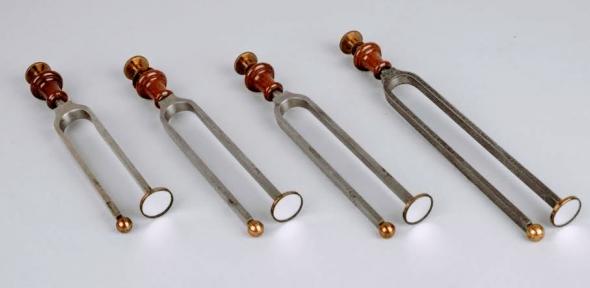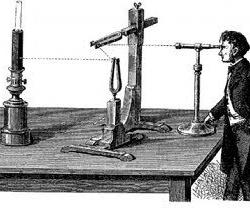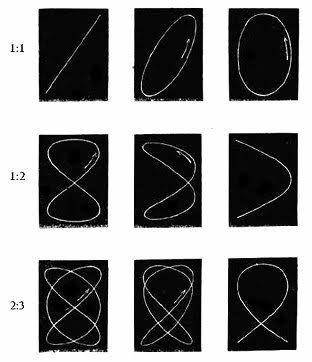Optical calibration
Lissajous figures were used to calibrate tuning forks during manufacture. By pairing an unfinished fork with a fork of a known standard frequency and by viewing the resultant figures it is possible to make tuning adjustments to an accuracy much greater than can be achieved by ear. Such fine-tuning was made using a simple metal file: to increase the frequency of the fork one files the top of the prongs, and to decrease one files inside the bottom of the U shaped 'yoke' of the fork.
Lissajous also invented the vibration microscope (a tuning fork with microscope lens attached to one prong), which became a key tool in the acoustical researches of Herman von Helmholtz and Rudolph Koenig. An image viewed through this microscope will vibrate with the tuning fork and if one views an object that is itself vibrating at right angles to the vibration of the microscope then Lissajous figures may be produced. These figures can be used to deduce the nature of the vibrations in question. Helmholtz, for example, used this device to understand the vibrations of a violin string.
Calibrating music
Lissajous performed his work on tuning forks during the second half of the 19th century. This was a period of great enthusiasm for standardization in science, and the science of acoustics was no exception. However, the world of music was also crying out for standardization and in particular musicians and musical instrument makers desired a standard for pitch. In 1858, and in response to the recently established German standard of A=440Hz the French government set up a commission charged with setting such a standard. Lissajous was a member of this committee, which also featured great composers such as Hector Berlioz (1803-1869) and Gioachino Rossini (1792-1868).
Torben Rees
Torben Rees, 'Lissajous tuning forks: the standardization of musical sound', Explore Whipple Collections, Whipple Museum of the History of Science, University of Cambridge, 2010




